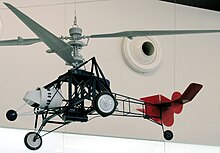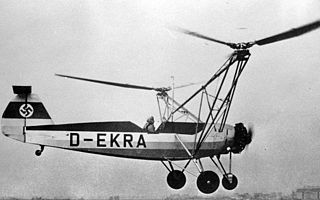
The Focke-Wulf Fw 61 was the first successful, practical, and fully controllable helicopter, first flown in 1936. It was also known as the Fa 61, as Focke began a new company—Focke-Achgelis—in 1937.

Louis Charles Breguet was a French aircraft designer and builder, one of the early aviation pioneers.
The Société anonyme des ateliers d'aviation Louis Breguet, also known as Breguet Aviation, was a French aircraft manufacturer.

A coaxial-rotor aircraft is an aircraft whose rotors are mounted one above the other on concentric shafts, with the same axis of rotation, but turning in opposite directions (contra-rotating).

A rotorcraft or rotary-wing aircraft is a heavier-than-air aircraft with rotary wings or rotor blades, which generate lift by rotating around a vertical mast. Several rotor blades mounted on a single mast are referred to as a rotor. The International Civil Aviation Organization (ICAO) defines a rotorcraft as "supported in flight by the reactions of the air on one or more rotors".
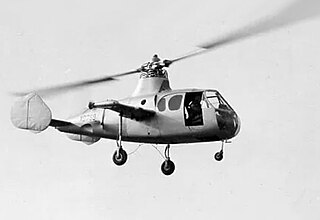
The Fairey Jet Gyrodyne is a British experimental compound gyroplane built by the Fairey Aviation Company that incorporated helicopter, gyrodyne and autogyro characteristics. The Jet Gyrodyne was the subject of a Ministry of Supply (MoS) research contract to gather data for the follow-up design, the Rotodyne.

A helicopter is a type of rotorcraft in which lift and thrust are supplied by horizontally spinning rotors. This allows the helicopter to take off and land vertically, to hover, and to fly forward, backward and laterally. These attributes allow helicopters to be used in congested or isolated areas where fixed-wing aircraft and many forms of short take-off and landing (STOL) or short take-off and vertical landing (STOVL) aircraft cannot perform without a runway.

The Fairey FB-1 Gyrodyne is an experimental British rotorcraft that used single lifting rotor and a tractor propeller mounted on the tip of the starboard stub wing to provide both propulsion and anti-torque reaction.

The Breguet-Richet Gyroplane was an early French experimental quadcopter rotary-wing aircraft developed by Breguet Aviation.

The Flettner Fl 185 was an experimental German gyrodyne developed by Anton Flettner, a machine which could fly both as a helicopter and as a gyroplane.

The Gyrodyne RON Rotorcycle was a tiny, single-seat helicopter designed under contract for the United States Navy. in the mid-1950s. It later was redesigned for a U.S. Marine Corps requirement for a small personal helicopter that would fulfill an array of roles, including observation, liaison, small unit tactical maneuvers, and which could be dropped to downed airmen behind enemy lines to facilitate their escape.

The de Bothezat helicopter, also known as the Jerome-de Bothezat Flying Octopus, was an experimental quadrotor helicopter built for the United States Army Air Service by George de Bothezat in the early 1920s, and was said at the time to be the first successful helicopter. Although its four massive six-bladed rotors allowed the craft to fly successfully, it suffered from complexity, control difficulties, and high pilot workload, and was reportedly only capable of forward flight in a favorable wind. The Army canceled the program in 1924, and the aircraft was scrapped.
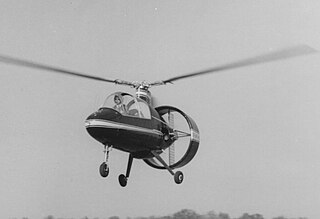
The Avian 2/180 Gyroplane was a two-seat, single-engine autogyro built in Canada in the 1960s. Several prototypes were built but production was not achieved.
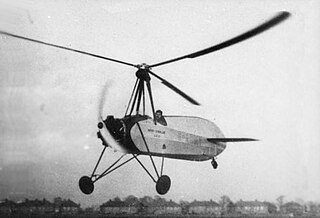
The Hafner A.R.III Gyroplane was a British 1930s experimental autogyro designed by Austrian Raoul Hafner, and built by the A.R.III Construction Company at Denham, Buckinghamshire.
The Phoenix Skyblazer is an American helicopter that was designed by the Nolan brothers and produced by Phoenix Rotorcraft of Fallston, Maryland and more recently Louisburg, North Carolina. When it was available the aircraft was supplied as a complete ready-to-fly-aircraft.

The Pescara Model 3 was the first of several coaxial helicopter designs by Raúl Pateras Pescara to demonstrate sustained controlled helicopter flight.
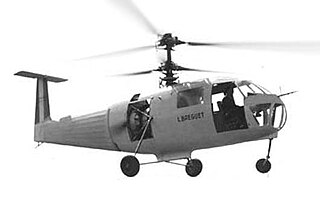
The Breguet G.111 or alternatively, G.11E was a French passenger coaxial rotors helicopter flown soon after World War II. Only one was built, development ceasing when funding ran out.

The SNCAC NC.2001 Abeille was a single engine, twin intermeshing rotor helicopter designed and built in France in the late 1940s. Three were completed but only one flew, development ending when SNCAC was closed.
The Arrow Coax Livella Uno is a German helicopter under development by Arrow Coax Ultra Light Helicopter of Hornhausen and introduced at the AERO Friedrichshafen airshow in 2015. The aircraft is intended to be supplied as a kit for amateur construction.

